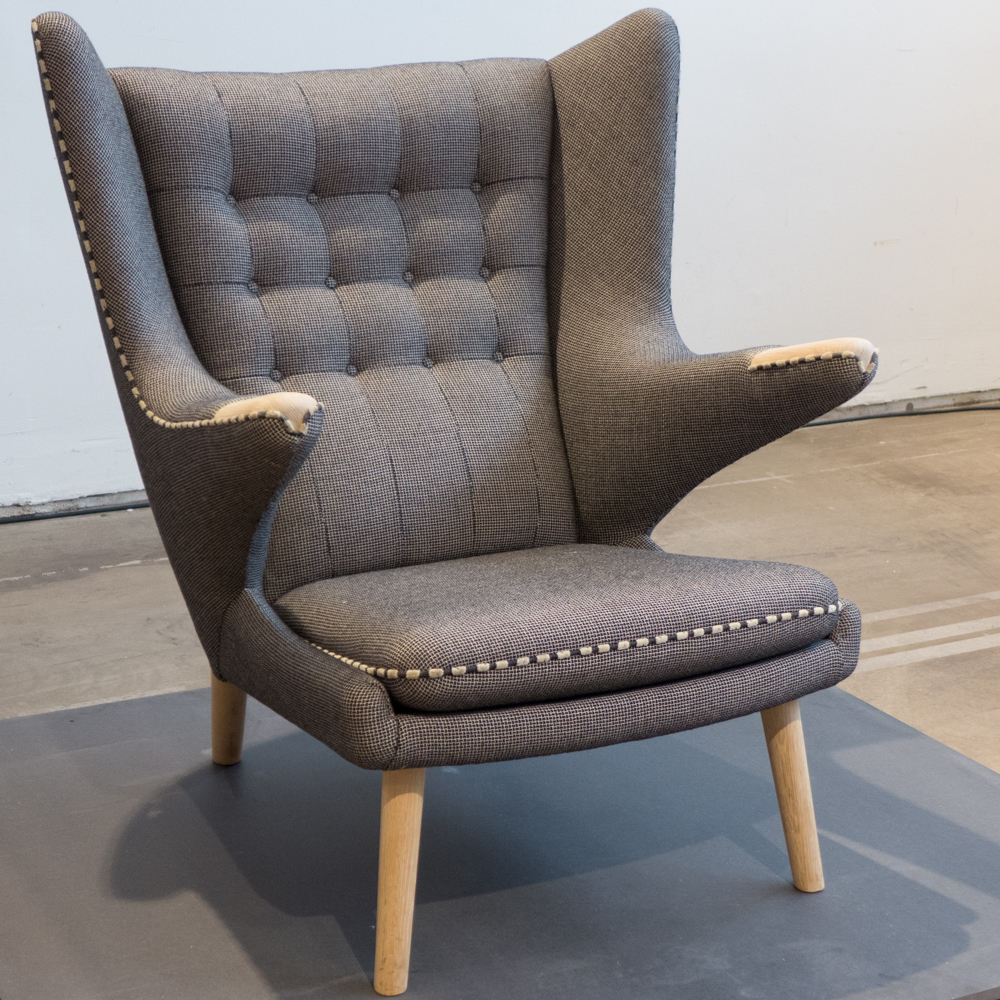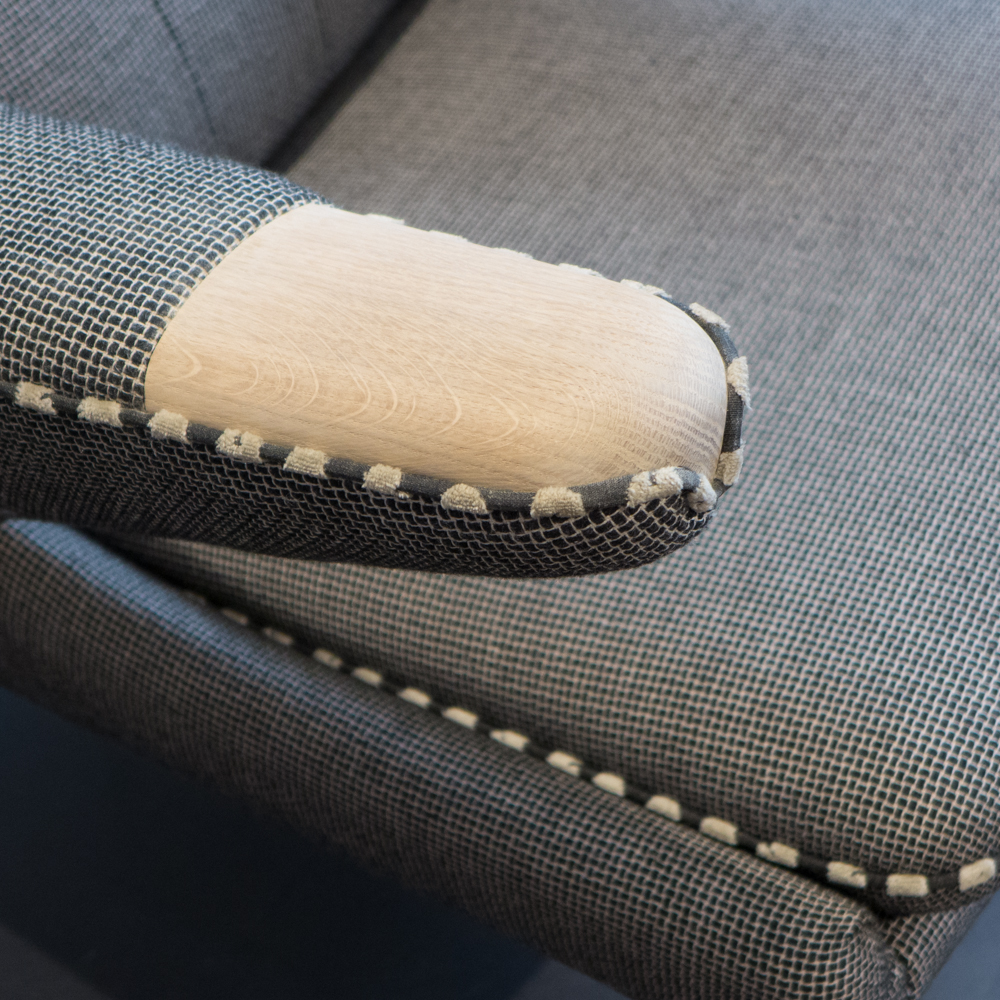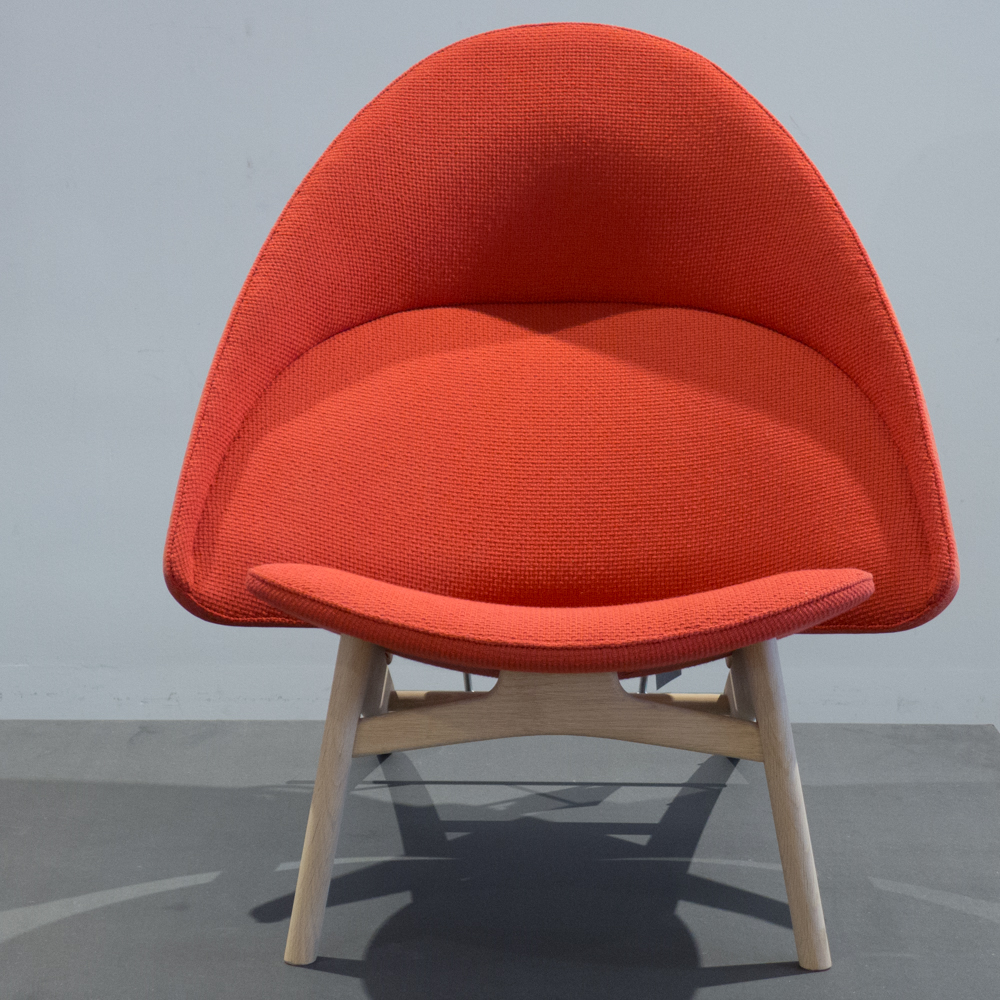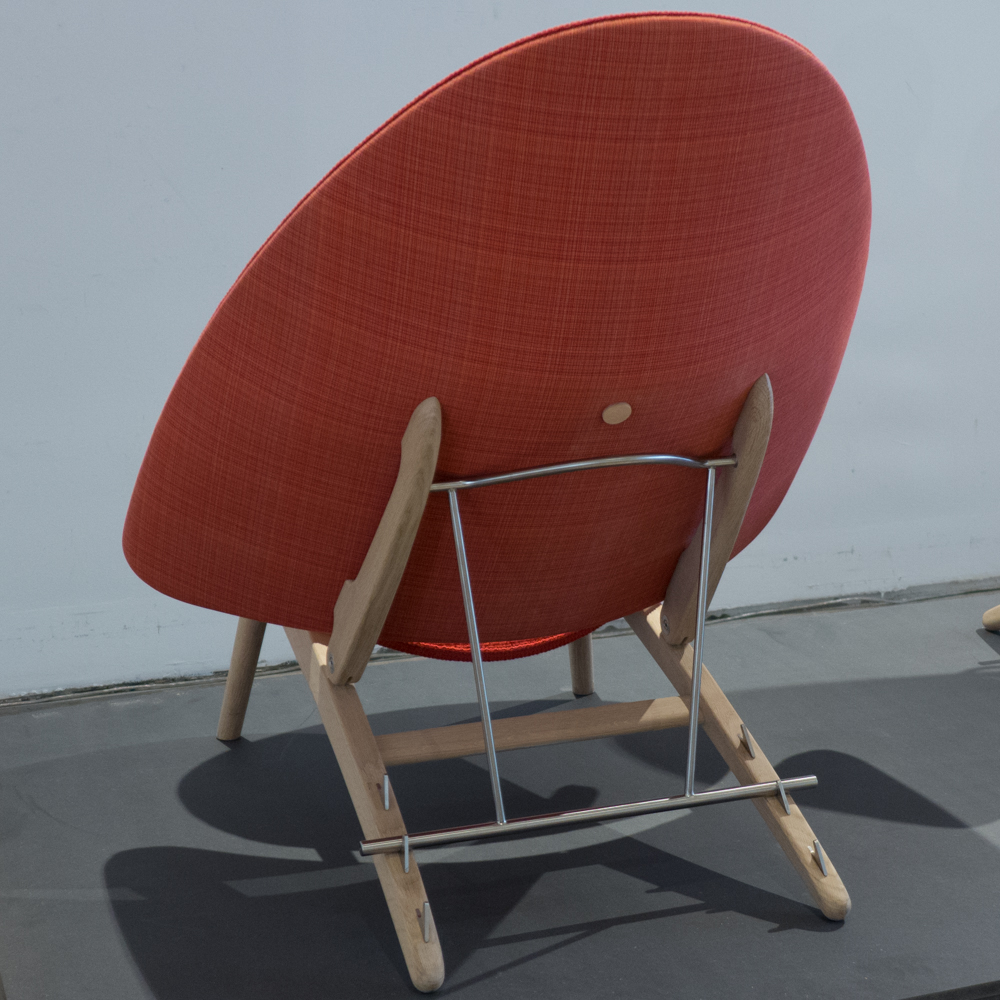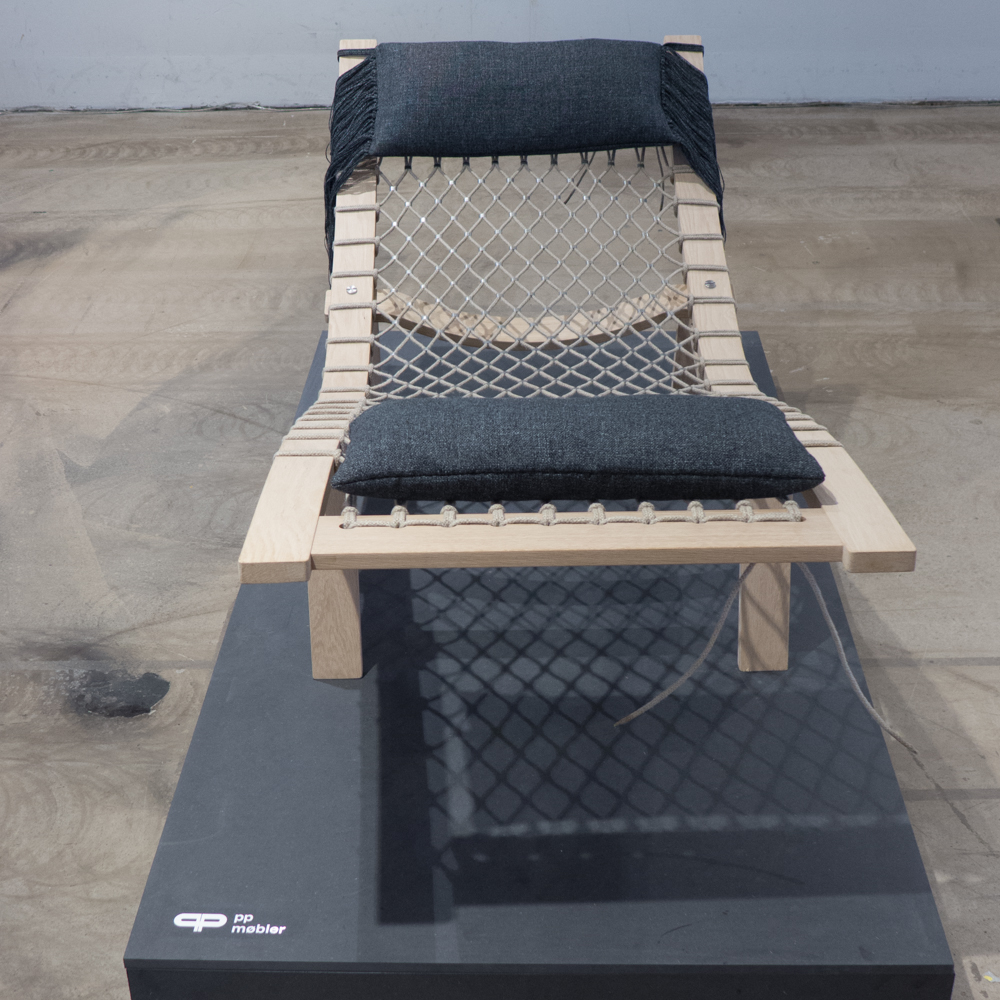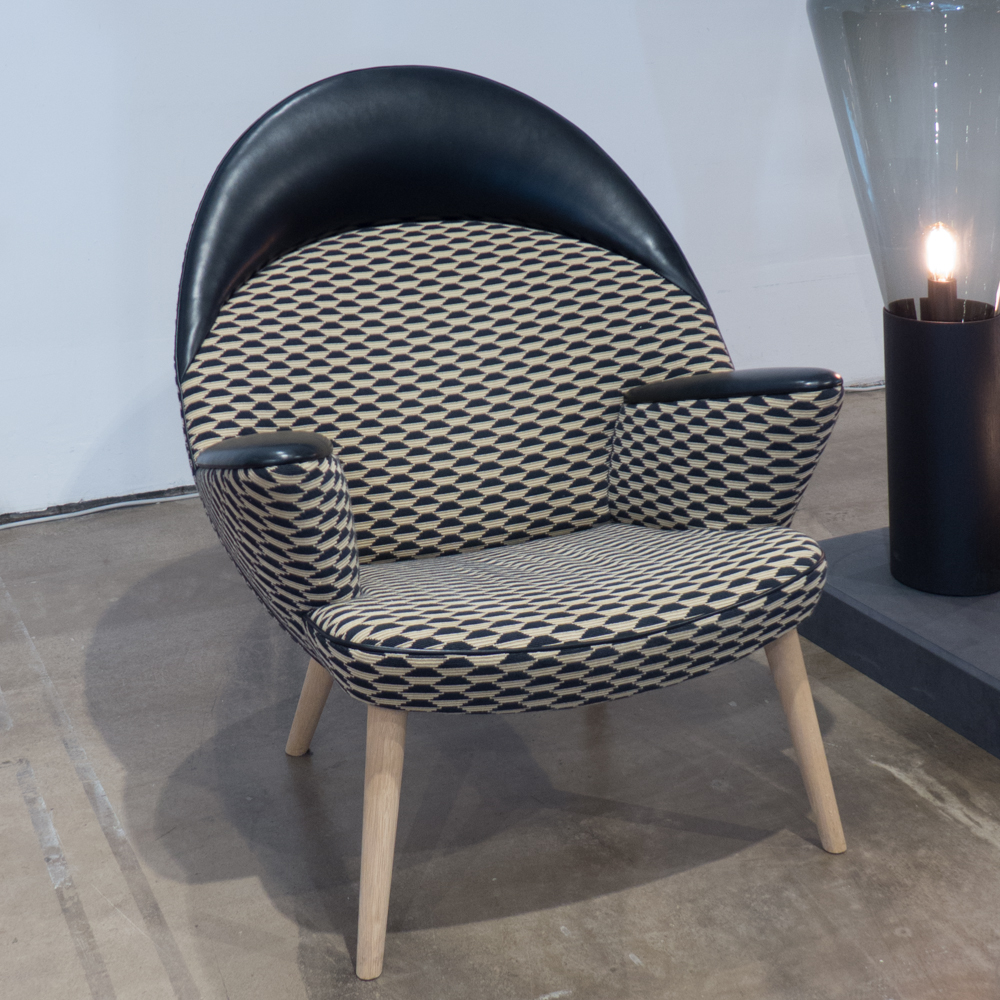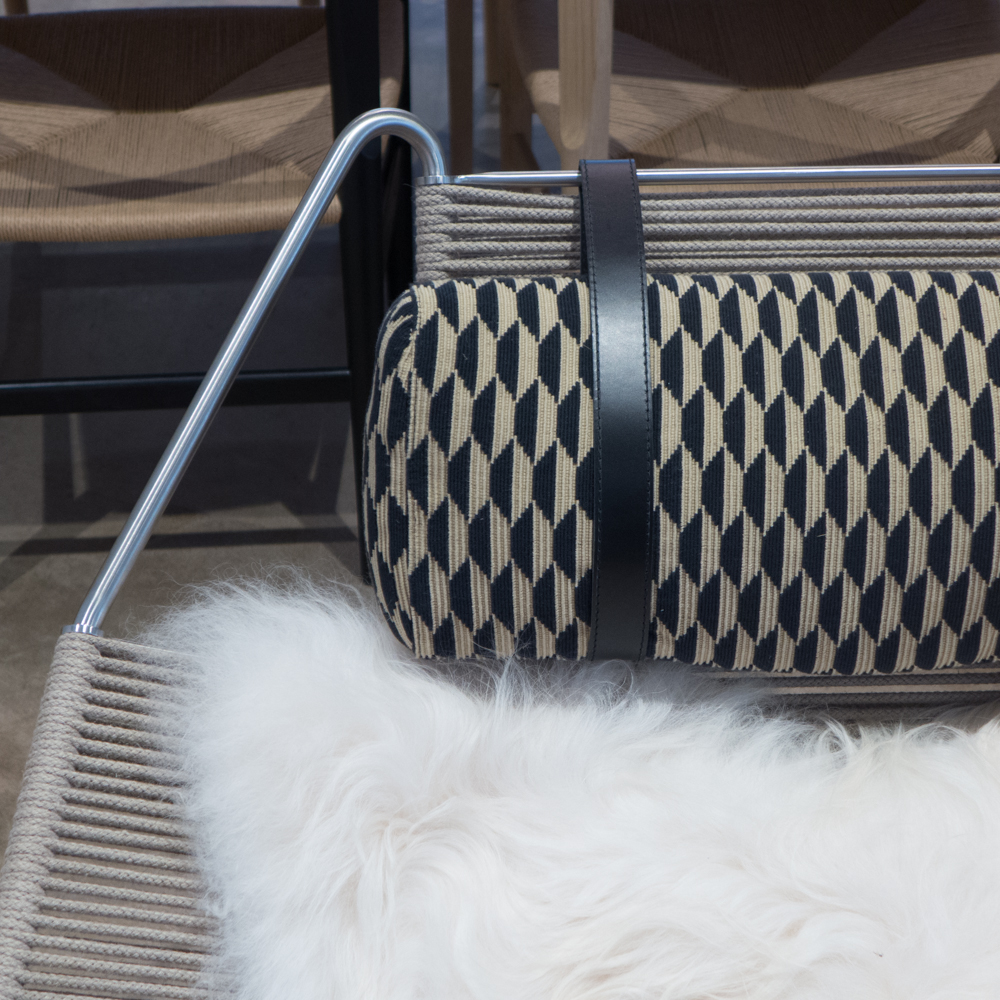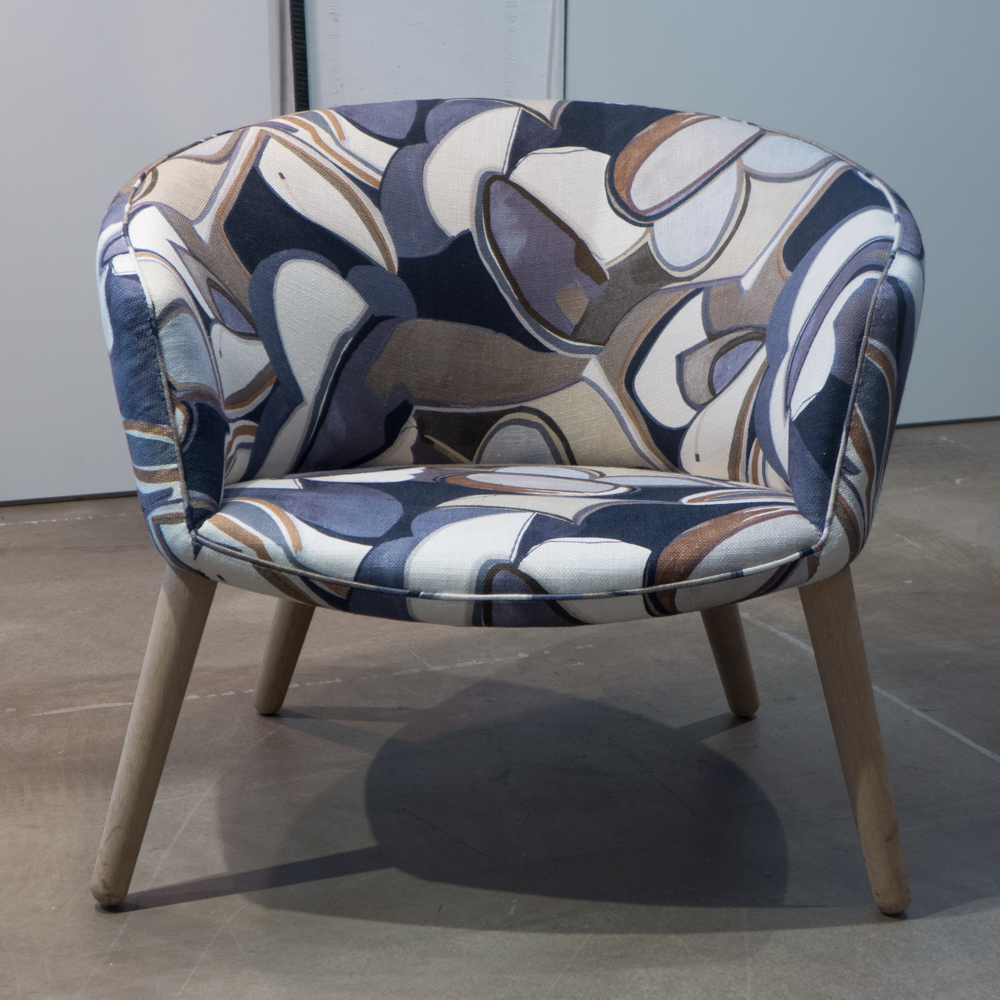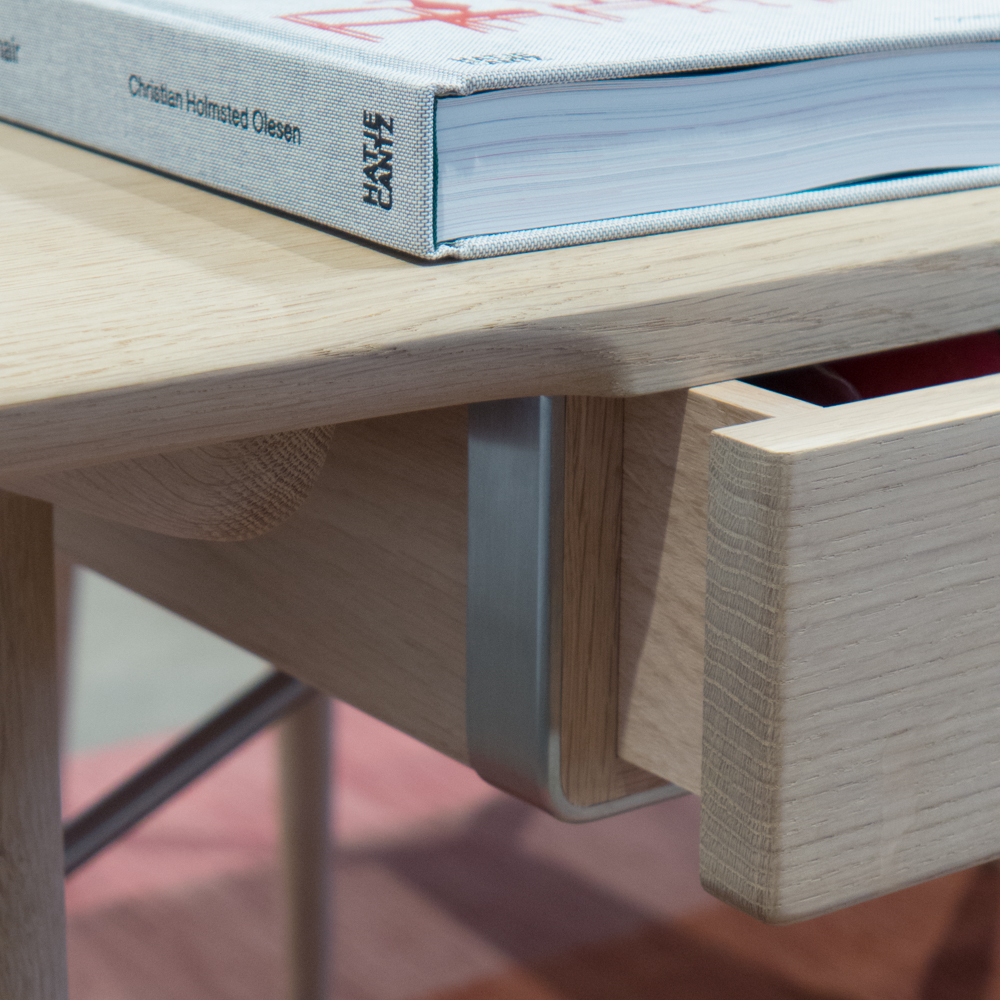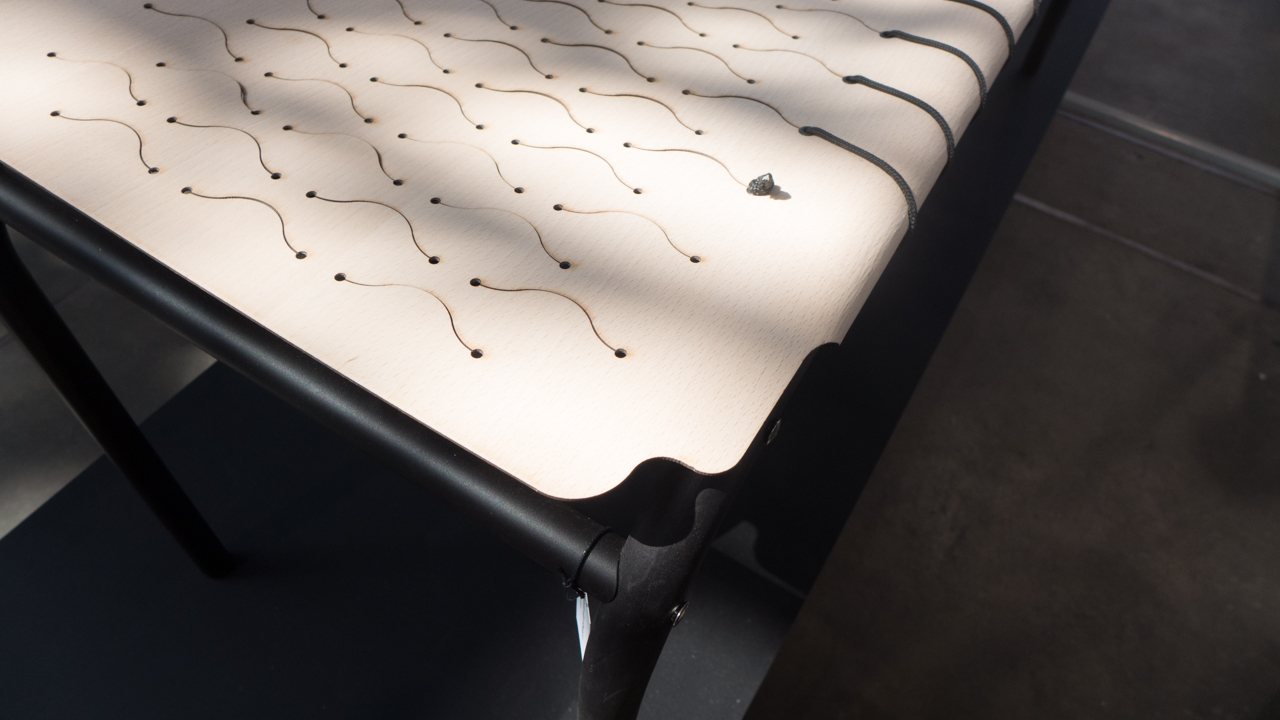Back in October several on-line design sites posted about Norwegian officials ordering the destruction of 100 copies of the famous Wegner Round Chair … a batch of fakes that had been ordered for a restaurant or hotel in Norway and made in China.
I’ve been sitting on this post for some time … appropriate I suppose because it’s about chairs … but the issue and, particularly comments on the original articles, raised several really important points that I had to mull over to write about after some careful consideration.
Of course, the first point is that copying a design without permission and without paying for a licence or copyright fee is at at the very least cheap skate, probably dishonest and in many countries actually a crime.
Some people could not understand how buying the chairs had broken the law but in Norway, as in Denmark, buying items that contravene copyright ownership is illegal for commercial companies so it is not just a manufacturer who could be breaking the law by copying a design although the law does still allow individuals to go abroad and buy fakes for their own use from countries like the UK where copyright laws seem to protect the manufacturer’s right to make a profit over the designer’s right to protect their work.
There used to be a phrase about passing off - implying deception - although I’m not sure anyone uses it now but one curious aspect about buying copies is the implied deception by a purchaser. I can see that someone obsessed by design might want to own at least a version of furniture they admire but furnishing a commercial space with copies of prestigious and expensive furniture is different. If there is not a big notice on the door saying “these are fakes but hoping you are still impressed” then presumably buyers are hoping that customers think that they have spent more on the refurbishment than they actually have. The Round Chair is very comfortable but was that the reason for buying the fakes? Other good chairs by other good designers are available … as the BBC might say.
Buying copies is a missed opportunity. Sort of playing it safe. Buying what someone thinks someone else will be impressed by. Why not commission a design from a young designer or a new furniture company and actually make a big thing of that? A hundred chairs in a new restaurant could launch a career or a company.
Of more concern were the comments posted by readers. Some were in support of copyright protection but they were in the minority. Many of the comments showed a real misunderstanding of the design process and actually revealed a major gap in understanding between the designers and their customers … the people who at the end of the process buy the furniture or lighting or ceramics or glassware.
Some comments implied that really they thought that the design process must be quick, easy and over rated so designers are overpaid for what is, surely, not much more than a quick sketch or at most a nice drawing for the manufacturer.
Of course the reality is so different. An initial idea might come as a flash of inspiration but realising that involves a huge amount of time to refine ideas, trying and rejecting some versions, and dealing with the whole process of moving from a model or a concept version to something that can actually be reproduced in a factory. And that’s without factoring into the ‘cost’ of the design the training and years of hard-gained experience that came before the design and surely has to be rewarded somehow.
For the Form range, designed by Simon Legald and launched by Normann last year, there was a three-year development programme that meant a considerable investment in terms of time, effort and money during a period before there was any income. That money, rightly of course, has to be recouped from subsequent sales and has to be an element of the purchase price. That is lost or at best compromised if another manufacturer steals your design and then produces a cheap version that undercuts what you have to charge to recover the investment in the development of the design.
The Form range of chairs and tables is also a very good example of the technical aspects of design that all the comments to the story about the fakes ignored. When Form was launched, Normann had a display in their shop in Copenhagen that showed just how much care had been taken with the moulding process to get the rigidity of the plastic right for comfort, how much care went into the way the legs are joined to the shell to achieve both the look but also the strength they wanted, and so on.
There are two points about that: the company making a copy is avoiding all that angst and cost but, perhaps even more important, most customers, clearly, don’t understand that the structure and the use of appropriate materials at the core of a piece is as important or more important than it’s appearance. Somehow, we have have got to a stage where people generally associate ‘design’ exclusively with appearance. It hints at a shallow understanding of the design process.
This goes only some way to explain the price difference between a genuine piece and the copy. One observation in the comments was that “Fakes wouldn’t exist if design wasn’t so expensive. Everyone should have access to good design.”
This seems to suggest that ‘design’ is seen as an ingredient rather than a process and wilfully fails to understand the basic economics. The implication in the comments was that the value/price put on the design side of production was substantial and if cut would reduce the ticket price … almost as if there were no costs between the design and the item appearing in the shop. The cost of materials, the wages to the people making the furniture, the cost of the factory premises in terms of rent or investment in buildings, investment and depreciation of machinery, the cost of power and water, the profit element for the manufacturer after the cost of administration and the tax levied on the profit, the shipping costs, the expenses of the retailer, their premises and staff, and the profit added by the retailer as well as their tax on profit and, in Denmark, 25% VAT and finally the transport cost of delivery to the customer are, almost certainly, all and every one more than any copyright fee earned by the designer. The sad reality is that if you doubled the designers fee it would make little difference to that final ticket price.
Major companies who own the rights to a design might, if they have a good and popular design, see a good return on what they paid the designer but in fact that regular revenue stream is usually what finances the next design or the promising design that for some reason does not simply walk out of the showroom. So add to that long list of costs the cost of advertising and the time spent talking to bloggers and magazine journalists and the investment in trade fairs just to make sure people know they have an amazing design someone might want to buy.
If your design is stolen and reproduced badly then it certainly undermines a designer’s and a manufacturer’s reputation.
Some argue that many fakes are indistinguishable from the original but then of course another economic reality kicks in. Legal controls on materials, sustainability, wages and so on means that there are few areas of the manufacturing process where cost can be reduced so, generally, quality suffers and what starts then is a race to the bottom.
Conversely, if every purchase is of a genuine piece then volume sales might mean that the unit cost comes down. By buying a fake people almost guarantee that the price of the original can only come down if quality comes down as well.
People buying fakes are not striking a blow for the democratic right to buy good design but undermining the industry and that means more and more production, even by major companies, is outsourced to countries where labour is cheaper. In the short term, consumers might not see that as a problem. They have the chair they want, or at least a chair that looks like the chair they want, so where is the problem? Long term, with outsourcing goes the reason for retaining skill and knowledge and infrastructure locally. What goes is the ability to produce in Europe and with it the close and crucial link between the designer and the manufacturer. There are accounts of Wegner calling in to the cabinet maker’s workshop on his way home to see how work was progressing and to discuss the feasibility of an element of a new design. I’d say that that close working relationship and mutual respect was crucial for both the designer and the craftsman and that is reflected in the quality of the product.
Several curious comments about the business of copying designs were along the lines that surely a chair is just a chair and all designs derive, in one way or another, from what has been produced before. Wegner himself was inspired by the designs of other countries and other periods and he returned to earlier forms and earlier shapes he himself had designed but he did not repeat a design but explored different solutions.
Although the chair is a basic piece of furniture there are almost limitless possibilities, particularly in using new materials. At the Autumn exhibition by cabinetmakers at Øregaard there were 18 very different chair designs and what was interesting to see there was that although those designs were clearly in that tradition of masters making perfect and expensive one-off pieces to show off their skills, most could, with few changes, go into commercial production. There was absolutely no indication that they were hard-pressed to come up with new ideas.
Nor is there a problem with manufacturers continuing to produce historic designs legally … that does not in itself mean they are living on past glory, as some comments suggested, or that it will stymy the work of new designers but generally it sets a standard and means that great designs continue to be available. The Wegner Round Chair is still made by PP Møbler in the right way, by skilled local craftsmen, and using the right materials. There is no sell-by date for good music or good books but new books and new music come out all the time … good design is no different.
You can probably guess that I had no truck with comments along the line of a chair is just a chair so what is all the fuss about?
Several comments about the destruction of the Wegner chairs asked rhetorical questions about what the designers, who are no longer alive, would feel about the cost of their furniture now because they wanted good design to be available to everyone. This is wilfully conflating several ideas. Hans Wegner, more than any other designer of his period, understood and appreciated the skill and therefore the value of the contribution made by the craftsman. He also understood completely the importance of using the best or the most appropriate materials and his designs were based always on the structural integrity of the piece. He understood, more than anyone, that a design like the Round Chair used expensive materials and levels of craft expertise which meant that it could never be a cheap chair. Don’t just look at the price of one of these chairs in the 1950s and conclude that was cheap. Compare that price with the average wage … in 1952 the average annual income in England was £589. Working families might only bring in seven or eight pounds a week. How many Wegner chairs could that buy?
That is why several of the Danish designers, including Hans Wegner, worked with the co-operative movement in Denmark to produce well-made and well designed furniture at a realistic price. The reality is that the Round Chair was always an expensive design.
Several comments about the fakes also suggested that designers from the Bauhaus in Germany wanted to produce cheap good designs for ordinary people. Again that is a distortion and an ironic misunderstanding of design history. Designers from the Bauhaus and before them, for different reasons, the artists and architects of the Arts and Crafts group in England, were appalled by the poor quality of mass-produced, factory-made goods for ordinary people - mainly because they simply reproduced badly, in cheap materials, what wealthy middle-class families owned. The designers of the Arts and Crafts movement were concerned that craft skills were being lost, particularly rural skills like chair making, as people moved from villages into towns to work in factories. Their answer was, in part, to return to simple, honest and well-made designs. Hand made and, inevitably expensive. The designers of the Bauhaus and architects at the start of the modern movement also wanted straightforward and honest designs but designs that made full use of industrial methods, new materials and exploited industrial scale of manufacture to keep prices down. If they were alive now they would hardly be advocating that every person had the right to buy a cheap Eames recliner.










